Feedback from Hospital Havelhöhe, Berlin on use of Deep Oscillation in Covid-19 patients with pulmonary oedema
Dr. med. F. Esposito, Chief Physician and Stephan Braum, Physiotherapist, of Hospital Havelhöhe, Berlin, Germany have provided the following report:
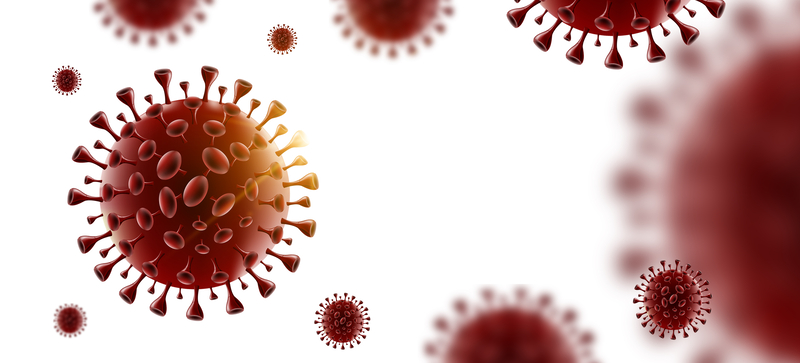
"Dear Mr Grundler,
Thank you for the free loan of the two DEEP OSCILLATION® Evident Clinics devices. They have proved to be very helpful during this period of the corona pandemic. We have been using the deep oscillation in our intensive care unit for severely affected patients.
The following reports refer to treatments between dates 04/22/2020 and 05/30/2020 on three COVID patients with severe progression."
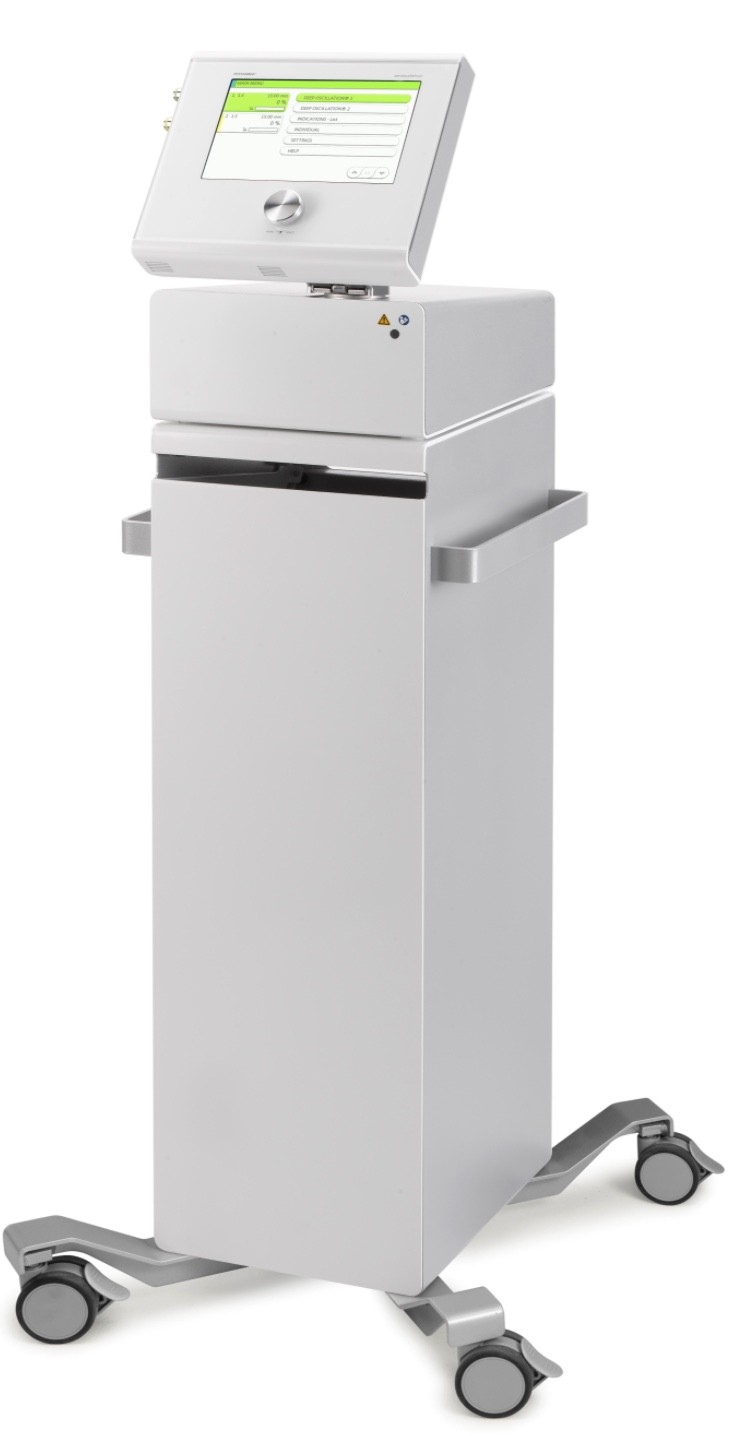
DEEP OSCILLATION® Evident Clinics
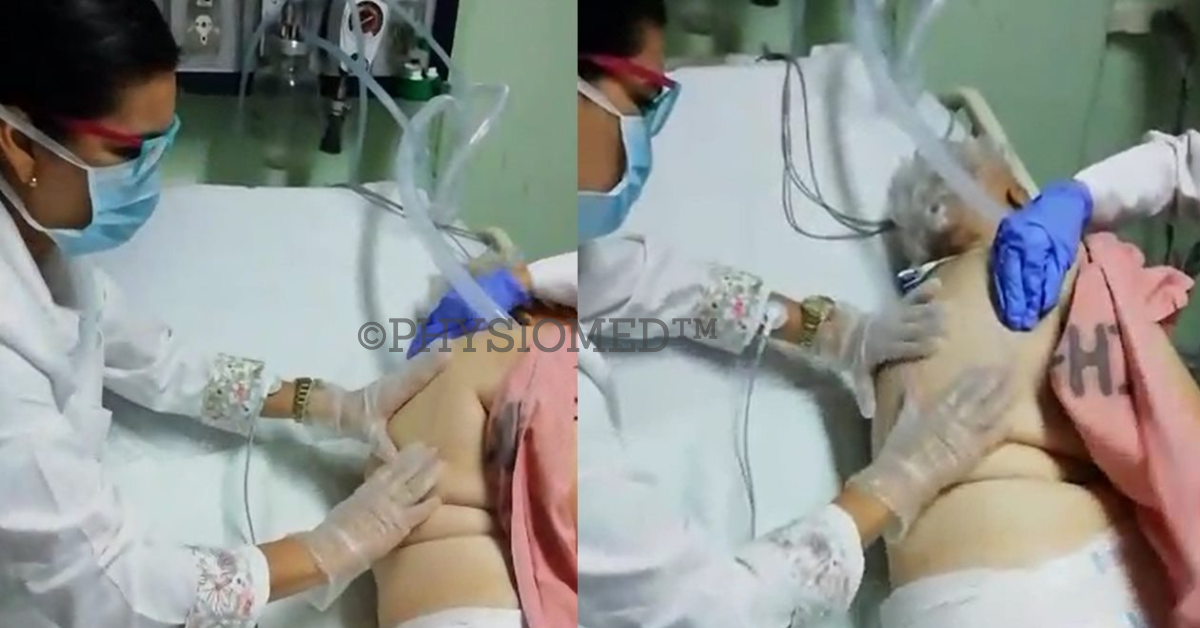
Example application of deep oscillation with gloves involving a patient with respiratory diseases.

Patient is female, age 55. At intensive care since 04/01/2020. Intubated and ventilated since 04/01/2020, on 4/16/20 tracheostomy. Weaning, BIPAP/CPAP, wet nose (nasal cannulation) and speech cannula had to be temporarily suspended again.
What symptoms does the patient show?
Pulmonary oedema
ARDS in COVID 19 - Pneumonia
Is the patient on temporary ventilation?
Weaning, also with wet nose (nasal cannulation) and speaking tube since 05/11
How many times a week is the treatment performed?
About 3 times, depending on other measures and interventions
Which treatment program do you use?
Pulmonary oedema
How is the treatment perceived by your patient?
Initially a slight increase in respiratory rate and heart rate, increase in coughing stimulus, in the course of treatment calming of the respiratory rate and the heart rate. Improvement of the oxygen content.
What effects of the therapy do you observe subjectively?
Mucolytic effect/expectoration activated or facilitated
Relaxation of respiratory muscles
General condition improves
Breathing is made easier
REMARKS:
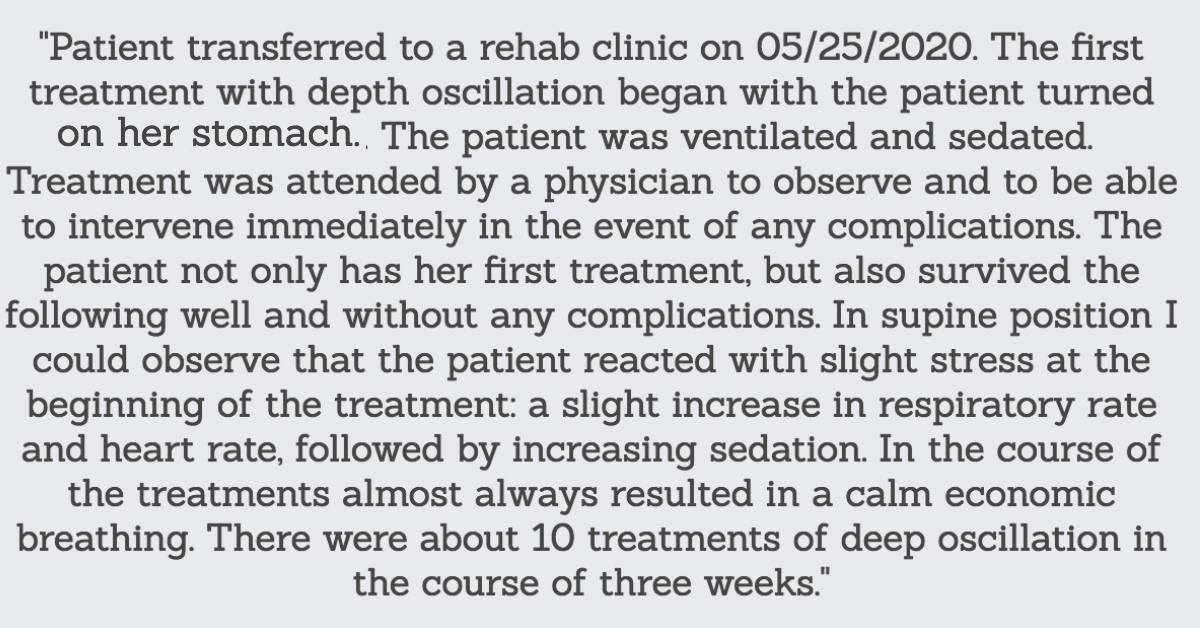

Patient is male, 76 years old, Covid 19, pneumonia with ARDS intubation on 04/04-18, then dilated. Tracheotomy, CWHDF from 04/08 – 05/03/20, abdominal position alternating, septic cardiomyopathy/encephalopathy, LVEF initial highly restricted, PEG plant 05/06/20
Which symptoms does the patient show?
• Pulmonary oedema
Is the patient on temporary ventilation?
• Weaning BIPAP/CPAP
How many times a week is the treatment performed?
• 3 times
Which treatment program do you use?
• Pulmonary oedema
How is the treatment perceived by your patient?
• Pleasant
• Patient is not able to speak in this moment
What effects of the therapy do you observe subjectively?
• Breathing is made easier
• Mucolytic action/expectoration activated or facilitated
• Relaxation of respiratory muscles
• General condition improves
REMARKS:
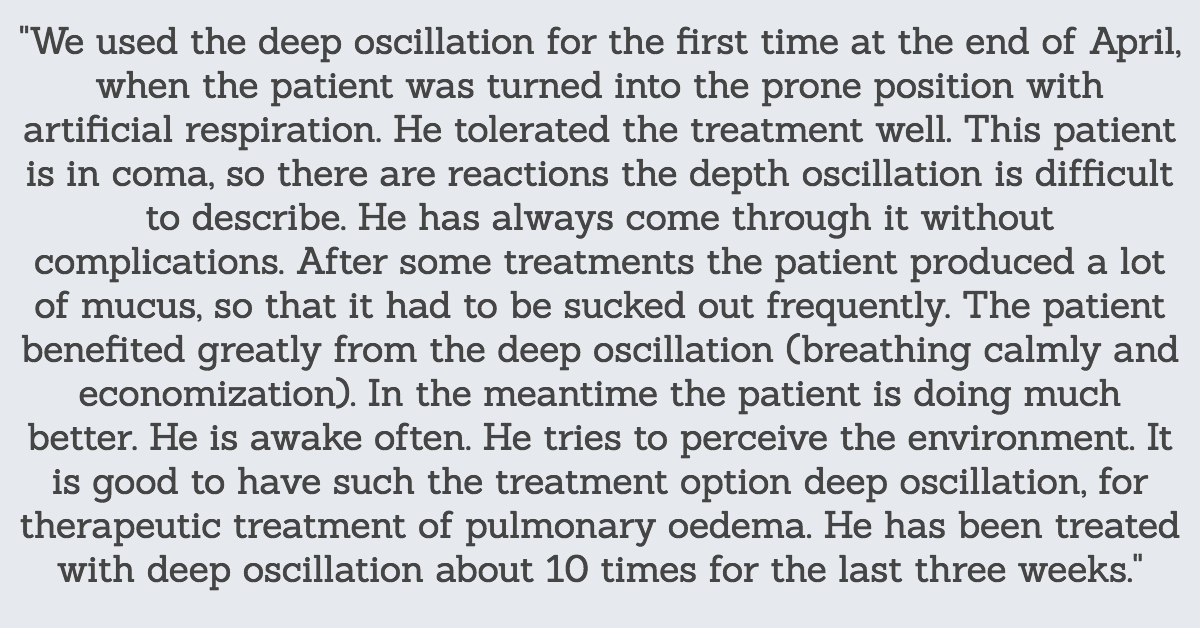

Patient male, 68, Intensive care 03/31/2020, COVID positive from 03/31/2020, severe ARDS on COVID-19 pneumonia, intubation/ventilation 04/01 - 19, dil. tracheotomy on 04/09/2020 -, abdominal positioning, CVVHDF from 04/01, clearly reduced LV function. (EF=20%), diabetes mellitus, arterial hypertension
What symptoms does the patient show?
• Pulmonary oedema
Is the patient on temporary ventilation?
• Weaning, BIPAP/CPAP/wet nose (nasal cannulation)/speaking tube
How many times a week is the treatment performed?
• 3 times
Which treatment program do you use?
• Pulmonary oedema
How is the treatment perceived by your patient?
• Pleasant
Which effects of the therapy do you observe subjectively?
• Breathing is made easier
• Mucolytic action/expectoration activated or facilitated
• Relaxation of respiratory muscles
• General condition improves
REMARKS
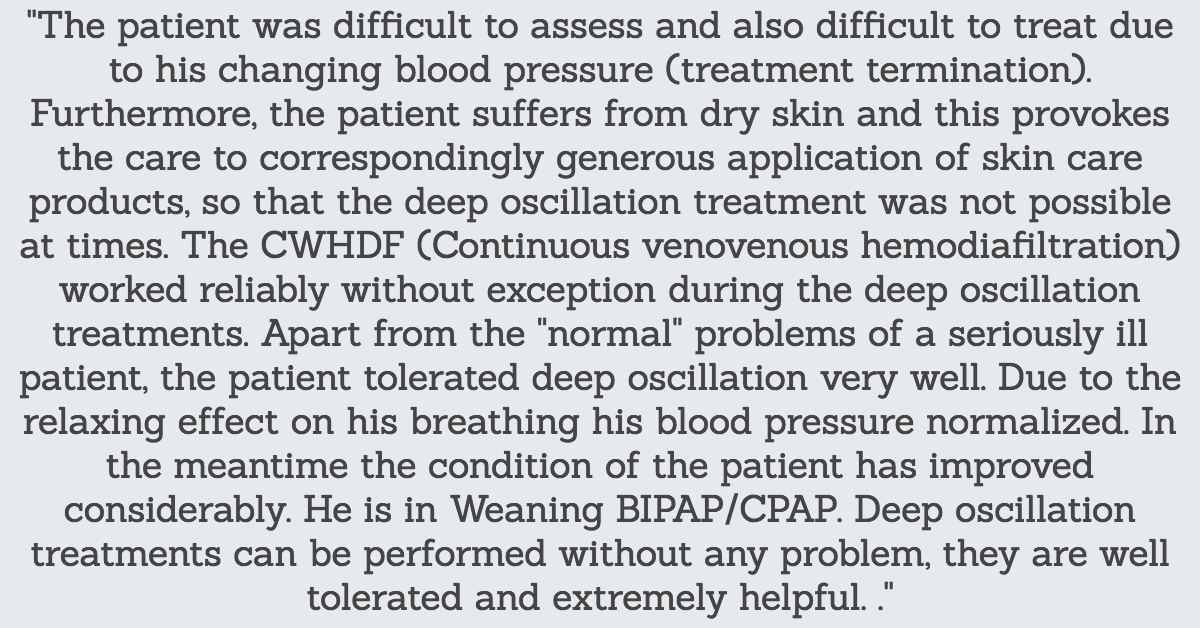
Product: DEEP OSCILLATION® Evident CLINICS
Programmes: Pulmonary oedema and fibrosis.
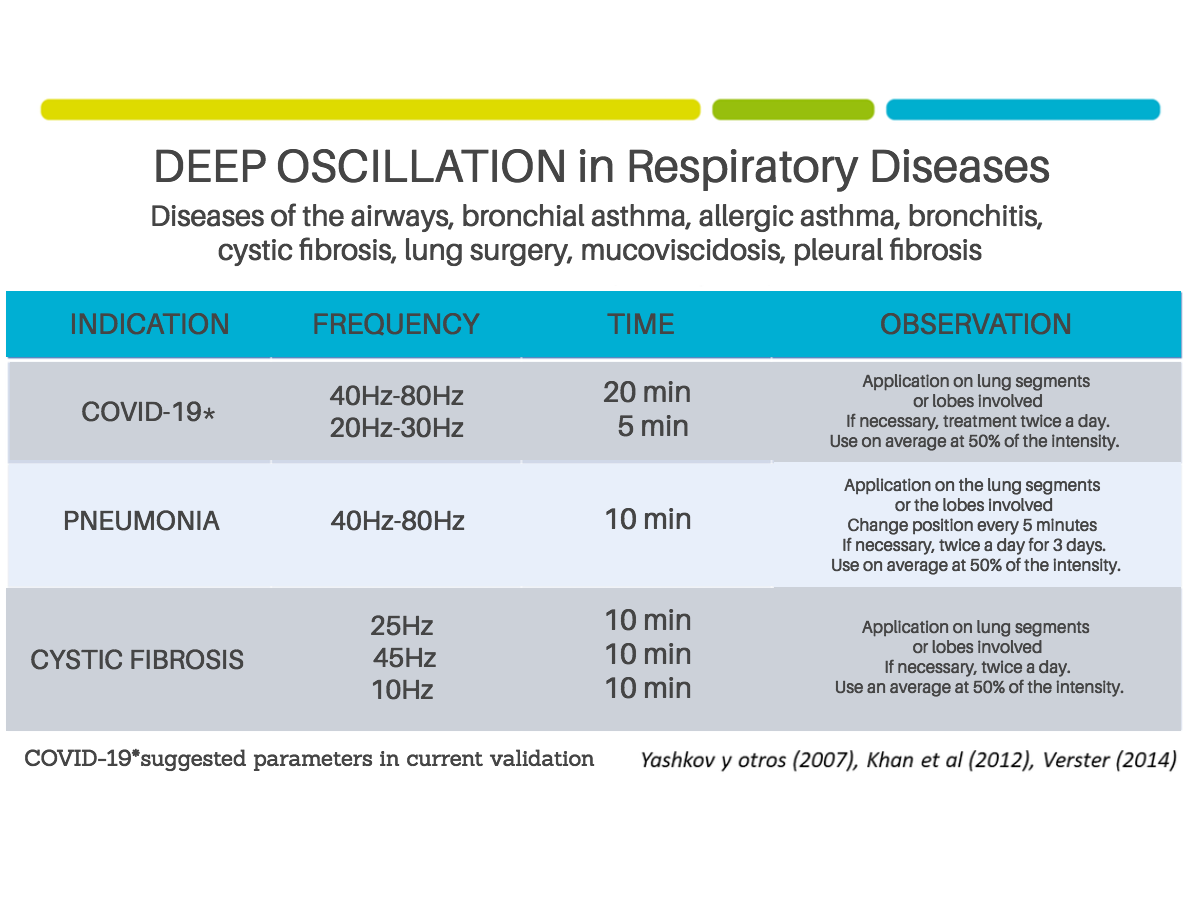
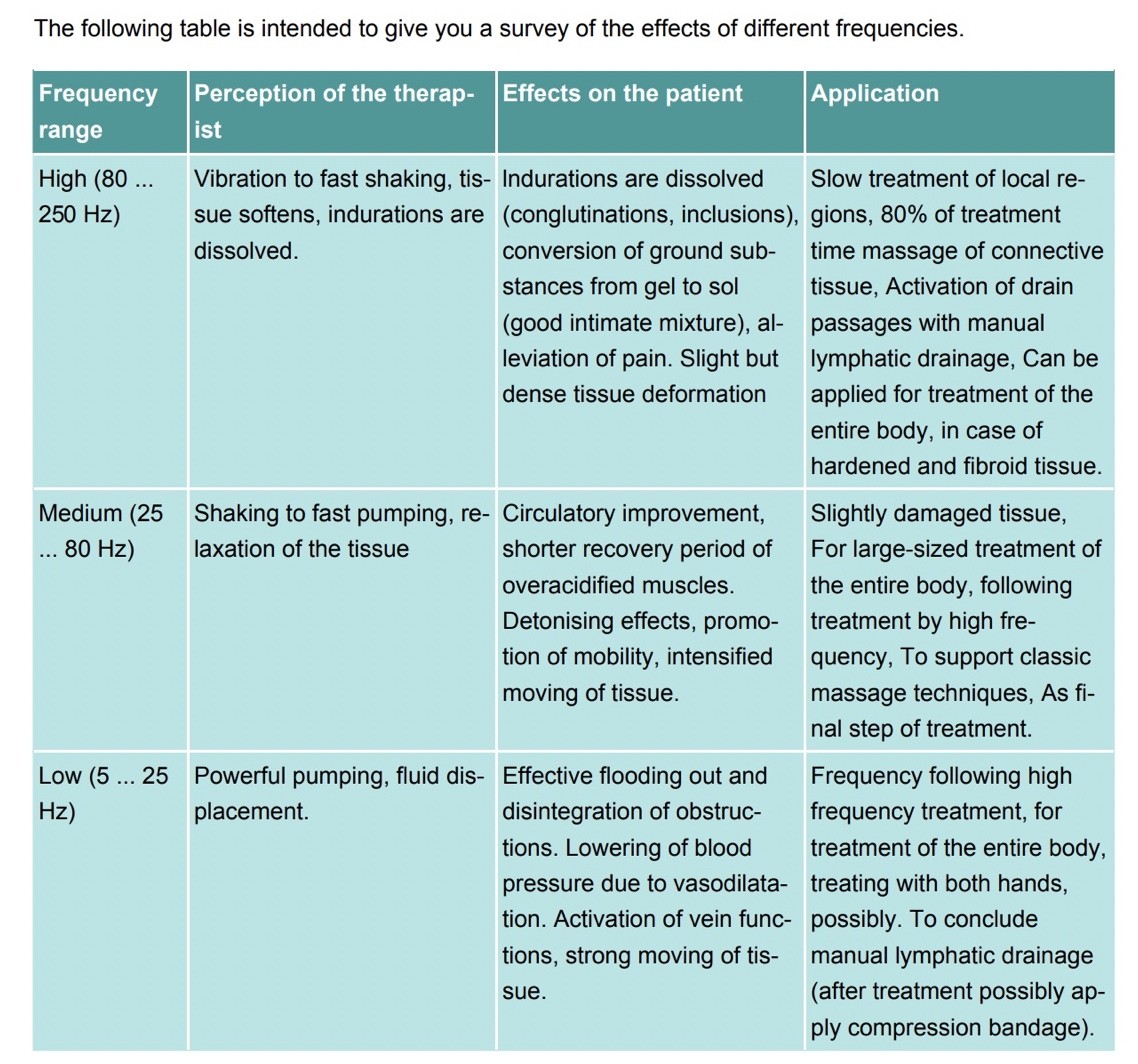
Deep oscillation (DO) has proven to be extremely successful for a variety of obstructive pulmonary diseases (COPD, asthma, cystic fibrosis, and more).
Sources:
Yashkov et al (2007)
Han MA et el, (2012)
Verster (2014)
The studies mentioned and the feedback from numerous users document the following results:
Mucolytic effect
Expectoration is facilitated
Interstitial drainage and pulmonary lymph activity increase
Respiratory musculature relaxes
Ventilation improves
Adhesiolysis (diminishing of fibrotic adhesion in lungs/thoracic wall)
COVID-19 patients develop pulmonary oedema as a frequent complication. In such cases, deep oscillation can make an important contribution. No explicit studies have been presented for this indication yet, but a few treatments have already yielded visible results.
Through reduction of the “lung load,” the “load on heart’s left side” is reduced, leading directly to an improvement in overall condition. In intensive care, deep oscillation treatments are possible before and after possibly indicated ventilation. While patients are being ventilated, treatment is not indicated because of possible interference with the ventilator and possible spasms.
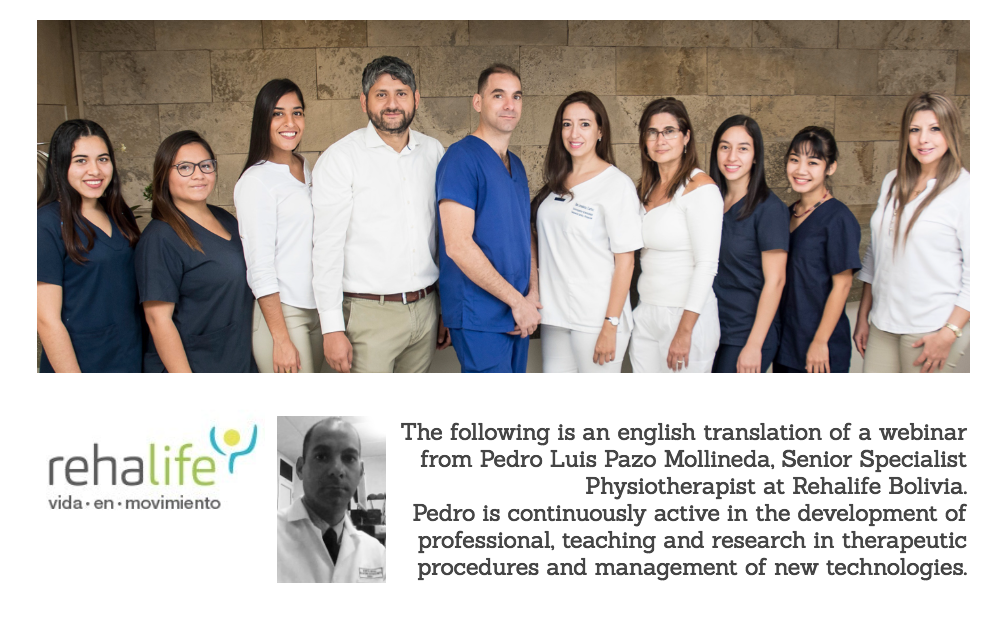
Usefulness of Deep Oscillation in patients with Pulmonary Fibrosis, Coronavirus sequel or COVID 19 Webinar of Pedro Luis Pazo Mollineda of Rehalife-bolivia - can be view in Spanish on Y
YouTube below is english translation.
"Hello everyone, yesterday I was talking about the possible sequels that the coronavirus (COVID 19) is leaving and the medical recommendations that are being given to people who have been able to survive this terrible epidemic.
Yesterday we saw that one of these short term sequels is pulmonary fibrosis where the tissue of the lungs hardens and does not work properly bringing about a decrease in respiratory capacity of up to 30% until proven in such patients.
And as we had agreed, today we are going to touch on various therapeutic guidelines to improve the respiratory function lost by this disease.
Then I propose to divide these therapeutic guidelines in 2 parts, in one of them we will touch certain technology and in another part we will approach the therapeutic exercises where both are going to have as objective a quick recovery and incorporation to their activities of the daily life with the greater possible functionality.
In this first stage I will tell you a little about the technology to be used in terms of its therapeutic function, we know that Deep Oscillation, started in the 80's, after a long stage of development. Deep Oscillation acts on the neuromuscular system, intervening in the connective tissue through electrostatic charges.
Producing a "pumping" in all its depth of the treated tissue. This effect leads to the re-establishment of mobility and mobilisation between the different fibres and layers, as well as the creation and improvement of drainage and feeding channels in the tissue.
The Deep Oscillation acts mainly on the microcirculation in the area of the interstitial connective tissue. There, a normalisation of the homeostasis, i.e. the permanent flow of fluid between the cells of the surrounding tissue and the lymph and blood paths. In this way it is possible to reduce pain states and to restore or accelerate the health circuit.
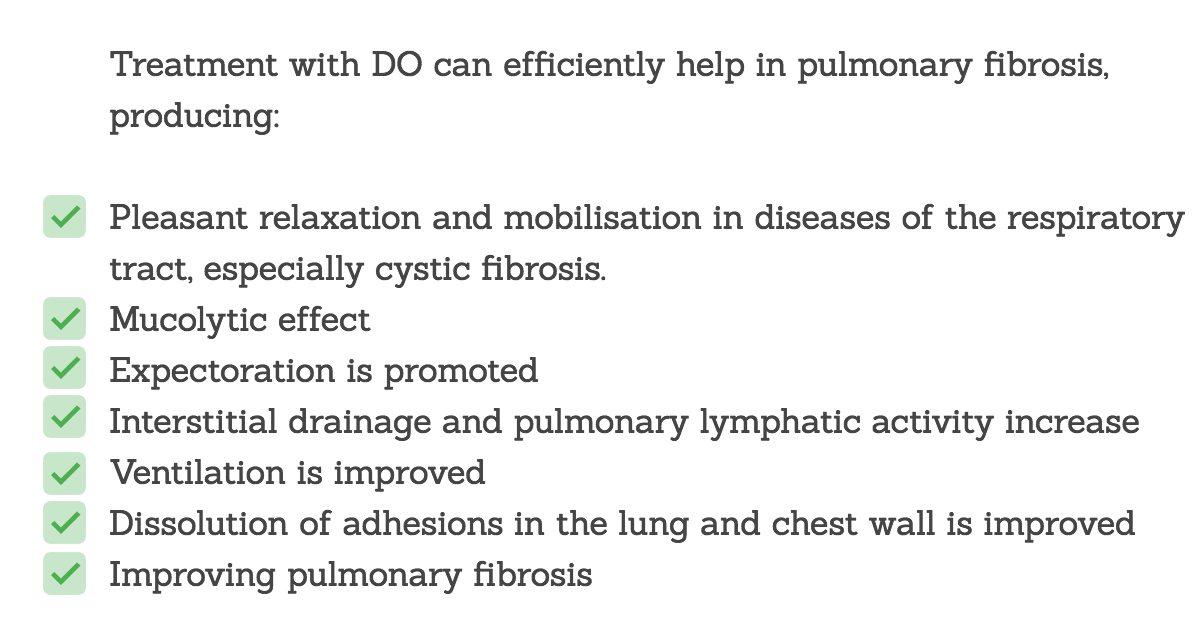
By reducing the "lung load", the "heart load" is also reduced consecutively and thus the overall condition can improve immediately."
Video Treatment examples:
• Deep Oscillation Treatment in Respiratory Disease - 1
• Deep Oscillation Treatment in Respiratory Disease - 2
• Deep Oscillation Visual Verification - Ultrasonography
After recovery, fibrosis of pulmonary tissue may occur in COVID-19 patients, even those with an otherwise moderate course. Studies and empirical progress reports show that deep oscillation treatment slows down or even halts the fibrosis of interstitial pulmonary tissue.
Sources:
• Hernández Tápanes et al. (2018)
Deep oscillation treatments can slow down or even halt the progress of fibrosis. And DO treatment can lead to the diminishing of fibrotic adhesion between the lungs and thoracic wall.
DEEP OSCILLATION - HOW DOES IT WORK?
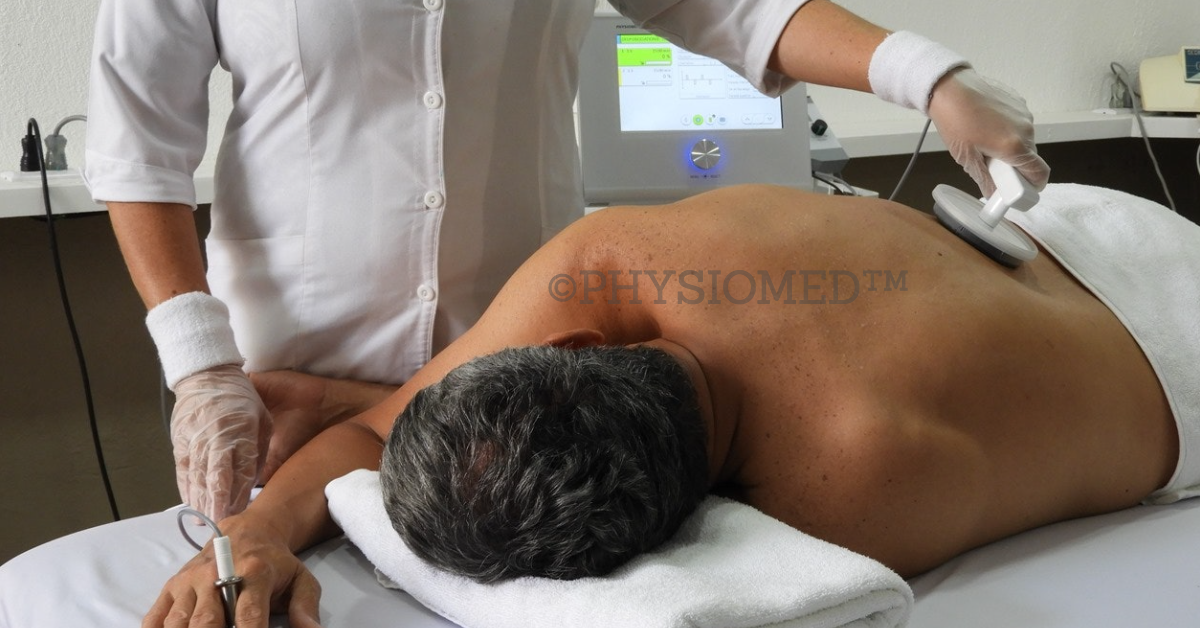
Example application of deep oscillation with hand applicator involving a patient with respiratory diseases.
DEEP OSCILLATION® is a unique treatment method that works via an alternating electrostatic field established between the patient’s tissue and an applicator or the therapist’s gloved hands. As the gloved hands or applicator glides over the skin electrostatic forces alternately attract and release the tissue, resulting in gentle but deep resonant vibrations that penetrate all tissue layers. At the proper parameter setting, deep oscillation can cause the entire thoracic cavity to vibrate.
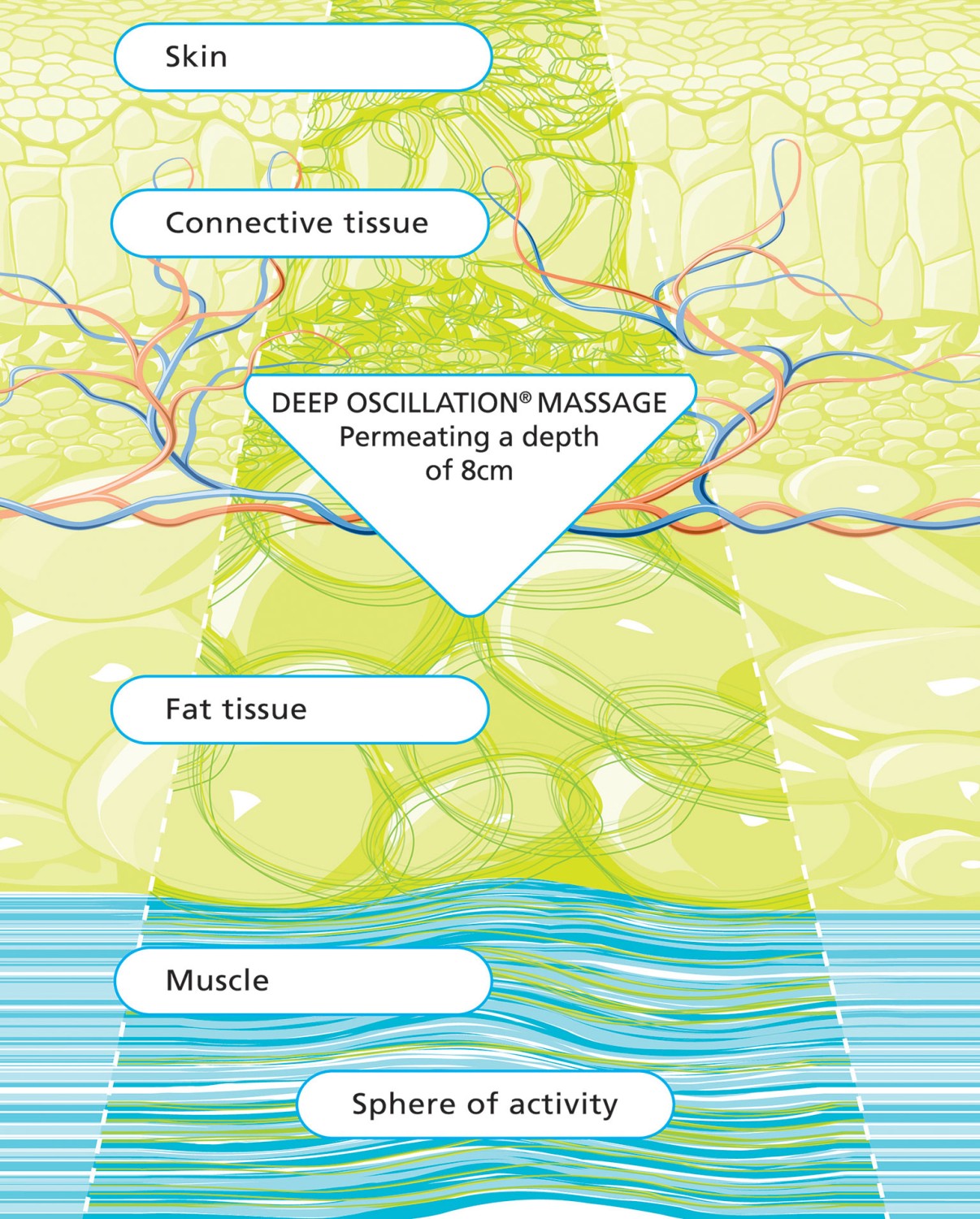
During the treatment, patients loosely hold a titanium contact element between their fingers. The pleasant therapeutic effect of deep oscillation is created beneath the therapist’s gloves or the manual applicator, which is moved in circles above the tissue. This successful form of treatment has been used for more than 30 years. It is a non-invasive, non-traumatic and highly effective approach.
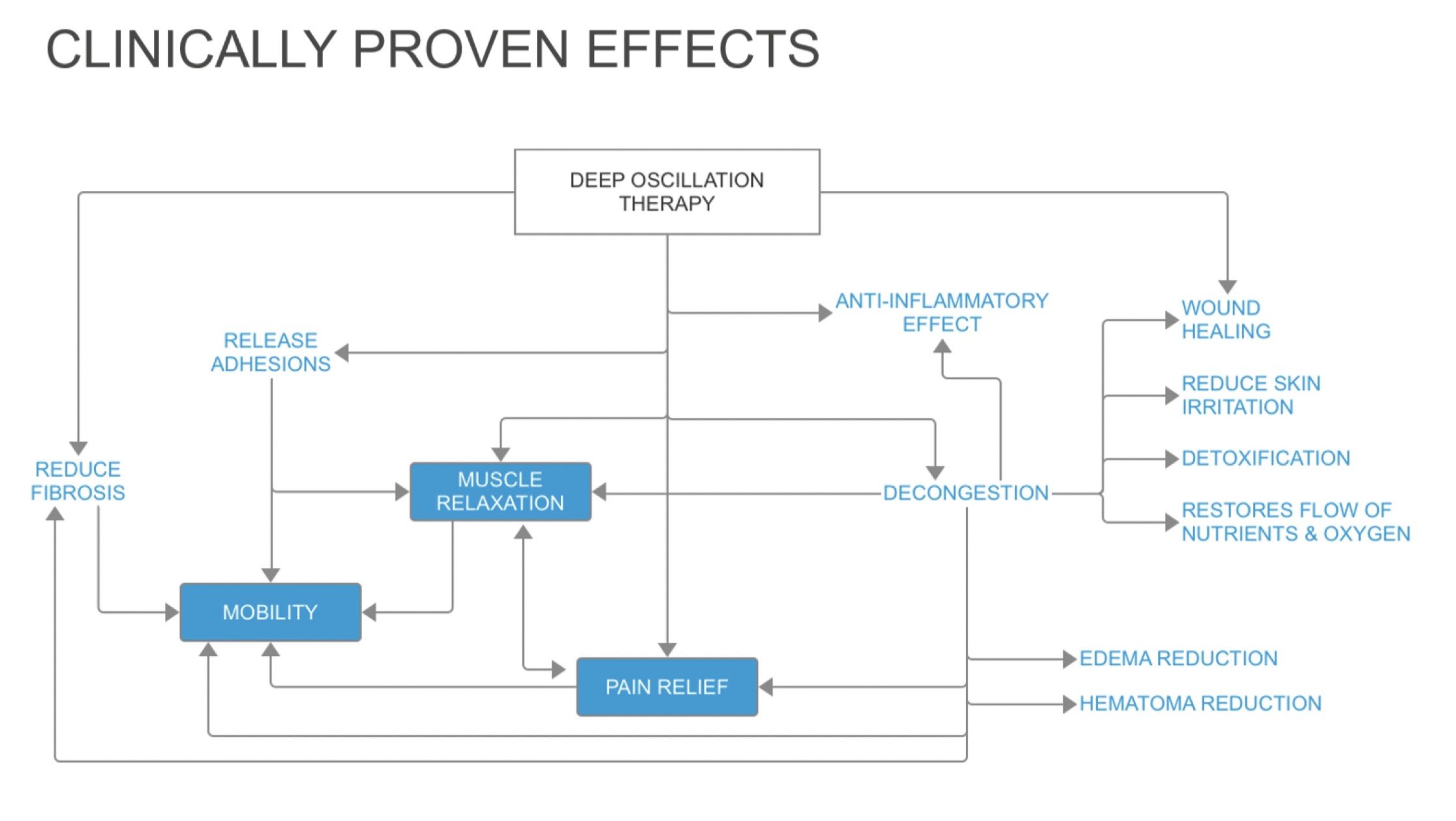
References for this article:
• Gao Y.-C., Peng C.-C., Peng R.Y. (2015): A long term chronic fibrotic adhesion of elbow muscles alleviated by applying hivamat 200 deep oscillation therapy. International Journal of Multidisciplinary Research and Development 2(1), 286-289.
• Han M.A., Ivanova D.A., Ljan N.A., Lukina O.F. (2012): Application of the pulse low-frequency electrostatic field at bronchial asthma of children. Russian Journal of Rehabilitation Medicine 1, 21-32.
• Gasbarro V., Bartoletti R., Tsolaki E., Sileno S., Agnati M., Coen M., Conti M., Bertaccini C. (2006): Ruolo dell‘oscillazione profonda (Hivamat® 200) nel trattamento fisico del linfedema degli arti. La medicina estetica 30(4), 473-478. English title: The role of deep oscillation therapy (Hivamat® 200) in the physical treatment of the lymphoedema of the limbs.
• Verster, J,: Pneumonia Case Report. 2014
• Yashkov A.V., Gazdieva E.M., Badyanova I.S. (2007): Efficacy of intermittent low-frequency electrostatic field in the sanatorium-based complex treatment of patients with chronic obstructive pulmonary disease. Kurortniye Vedmosti 3(42), 62-63.
• Hernández Tápanes S., Socas Fernández M., Iturralde Y., Addiel Suáres Fernández A. (2018): The Effect of Deep Oscillation Therapy in Fibrocystic Breast Disease. A Randomized Controlled Clinical Trial. International Archives of Medicine Vol. 11 No. 14. doi: 10.3823/2555.
Full references
For more information on Deep Oscillation please email info@physiopod.co.uk or call 01159 167 685.

